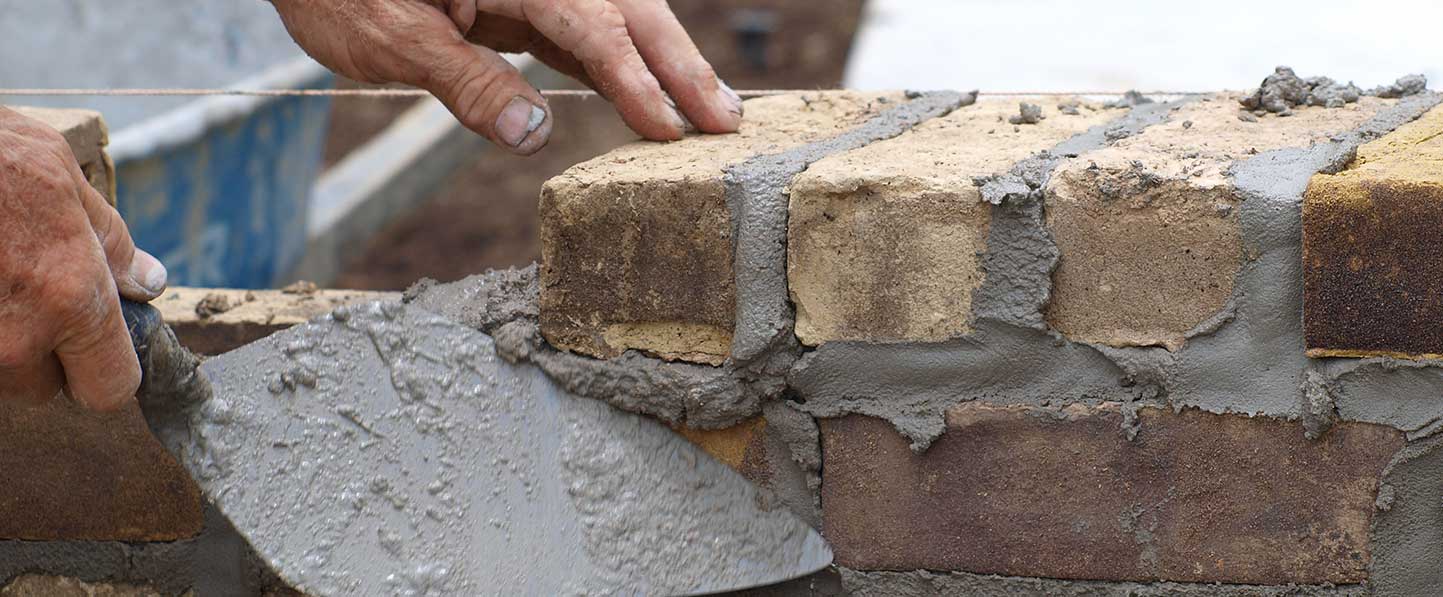Trusted Tuckpointing Services for Fixing Brick and Stone Surfaces
Trusted Tuckpointing Services for Fixing Brick and Stone Surfaces
Blog Article
Unlocking the Keys of Lasting Stonework Building Practices for Eco-Friendly Buildings
Amongst the myriad strategies to environment-friendly structure, sustainable masonry building stands out as a time-tested and durable technique that holds a wide range of untapped possibility. From the option of materials to ingenious building techniques, the keys to attaining sustainability within stonework building are diverse and fascinating.
Advantages of Sustainable Masonry Building And Construction
Embracing lasting stonework building methods not only lowers environmental impact however likewise offers long-term economic advantages to building contractors and areas. By using products like recycled bricks, blocks, and stones, home builders can significantly decrease the carbon impact of their tasks while promoting resource efficiency. Additionally, lasting stonework construction methods, such as appropriate insulation and thermal mass residential properties, can improve power efficiency within structures, causing decreased functional expenses over time.
Moreover, the toughness and durability of masonry structures add to lasting financial advantages. Buildings constructed making use of sustainable stonework practices usually require much less maintenance and repair service, equating to set you back savings for building contractors and homeowner. The durability of stonework materials likewise ensures that structures continue to be stable and protected, lowering the need for regular improvements or replacements.
Eco-Friendly Masonry Products
Making use of green stonework materials is a pivotal step in the direction of boosting the sustainability of building practices and reducing environmental effect while making best use of lasting economic benefits. Lasting stonework materials are sourced, generated, and used in a manner that reduces general environmental influence. Lasting concrete blocks incorporate recycled accumulations and may include enhanced insulation homes, contributing to power efficiency in buildings.
Moreover, natural products like adobe, rammed earth, and straw bundles offer superb thermal mass residential properties, decreasing the demand for heating and cooling down energy. These products are frequently in your area available, advertising local economic situations and lowering transportation-related carbon emissions. By choosing environmentally friendly stonework materials, building tasks can considerably lower their environmental impact and add to the development of much healthier, more lasting constructed environments.
Energy-Efficient Stonework Methods
Energy effectiveness plays an essential duty in enhancing the sustainability of masonry building techniques. By executing energy-efficient masonry techniques, building contractors can significantly lower the overall energy usage of a building, resulting in reduced functional prices and a smaller sized environmental footprint. One essential energy-efficient masonry method is making use of thermal mass, which entails incorporating thick products like concrete or block into the building's structure to absorb and store heat. This assists regulate interior temperature levels, lowering the need for mechanical heating and cooling systems.

Innovations in Sustainable Stonework
Recent developments in lasting masonry practices have brought around ingenious strategies that are reshaping the building and construction industry. One such innovation is Homepage the development of self-healing concrete, which makes use of bacteria embedded within the concrete to recover cracks autonomously. This development not just decreases upkeep expenses yet also improves the resilience of stonework frameworks, adding to their sustainability.
An additional significant advancement is the use of recycled accumulations in stonework construction - masonry contractor. By integrating products such as smashed ceramic waste or recycled glass right into concrete blends, contractors can minimize the ecological impact of construction jobs while preserving architectural honesty. This practice not only diverts waste from garbage dumps yet also conserves natural resources, making it a crucial innovation in lasting stonework building and construction
Furthermore, the integration of electronic layout devices, such as Structure Information Modeling (BIM), is revolutionizing the way masonry structures are planned and constructed. BIM enables even more precise calculations, reduced material wastage, and boosted look at here power performance, inevitably bring about even more lasting building practices. These innovations collectively signify a promising future for lasting stonework construction in the period of green structures.
Future Trends in Masonry Sustainability
With the ingenious strides made in sustainable stonework methods, the future patterns in masonry sustainability are positioned to more revolutionize the construction sector. Among the essential trends forming the future of masonry sustainability is the enhanced assimilation of modern technology. Improvements such as Building Information Modeling (BIM) and digital truth simulations are being utilized to maximize decorative driveways masonry construction procedures, resulting in reduced product waste and boosted energy effectiveness in structures.
Additionally, the development of unique sustainable materials is readied to play a considerable role in improving the eco-friendliness of masonry construction. masonry contractor. Developments like self-healing concrete, recycled accumulations, and bio-based binders are gaining grip for their ability to decrease environmental influence while maintaining architectural integrity

Final Thought
In final thought, sustainable masonry construction techniques use countless advantages for green structures. masonry contractor. Developments in sustainable stonework are constantly being established to further boost the environmental efficiency of structures.
Report this page